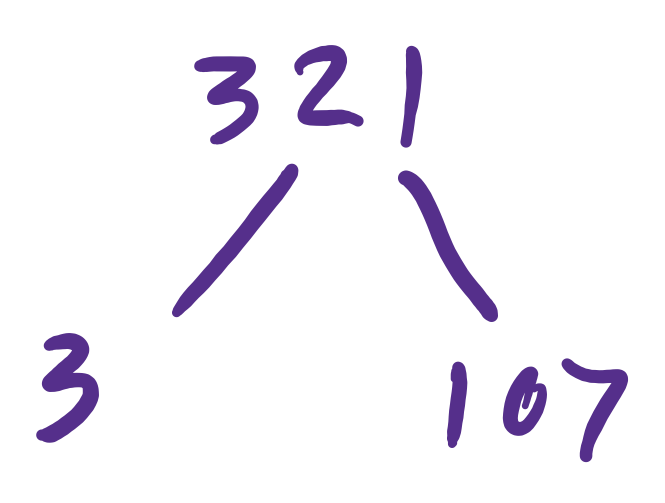Fundamental Theorem of Arithmetic and Factoring
(NOTE: It is definitely advised to watch the mini lecture video if you haven’t already).
When a number is composite, we often want to know what its factors are. Since every natural number is divisible by at least one prime number, it makes sense to look for the primes that divide our number. Better still, it might be more helpful to write our given number as a product of those primes. The following theorem tells us that we can always do this, and that there is only one way of doing this.
You may have factored numbers into prime powers at some point in your life. The above theorem is what allows you to do this. Note that every natural number can be written as a product of primes, including primes themselves. In the latter case, the prime factorization is just that prime number itself!
Factoring Natural Numbers
To factor numbers, we use what are called factor trees.
To factor a number \(n\) using a factor tree:
- Write the number \(n\) at the top of the page.
- Find a divisor of \(n\) and write that below \(n\) and to the left, slightly. Draw a line from \(n\) to this number.
- Divide your \(n\) by this factor, and write the result below \(n\) but to the right. Draw a line from \(n\) to this number.
- Repeat the last two steps for each number you add to the tree until you have only primes at the bottom of the tree.
- If you multiply all the primes at the base of your tree, you will (or should) get back \(n\). So, write \(n=\) a product of these primes, and simplify the expression so you have a product of prime powers.
Quick Example: Suppose we want to factor \(n=84\). The factor tree is as follows:
So, by the factor tree above, we can write \(84=2\cdot 2\cdot 3\cdot 7=2^2\cdot 3\cdot 7\).
\(81=3^4\)

\(240=2^4\cdot 3\cdot 5\)

\(321=3\cdot 107\)

\(1023=3\cdot 11\cdot 31\)

\(503\) is prime, so it is it’s own factorization.
Note that the primes that are less than \(\sqrt{503}=22.42\) are \(2,3,5,7,11,13,17,19\) and none of these primes divide \(503\), so therefore \(503\) must be prime, and primes are their own factorizations.
